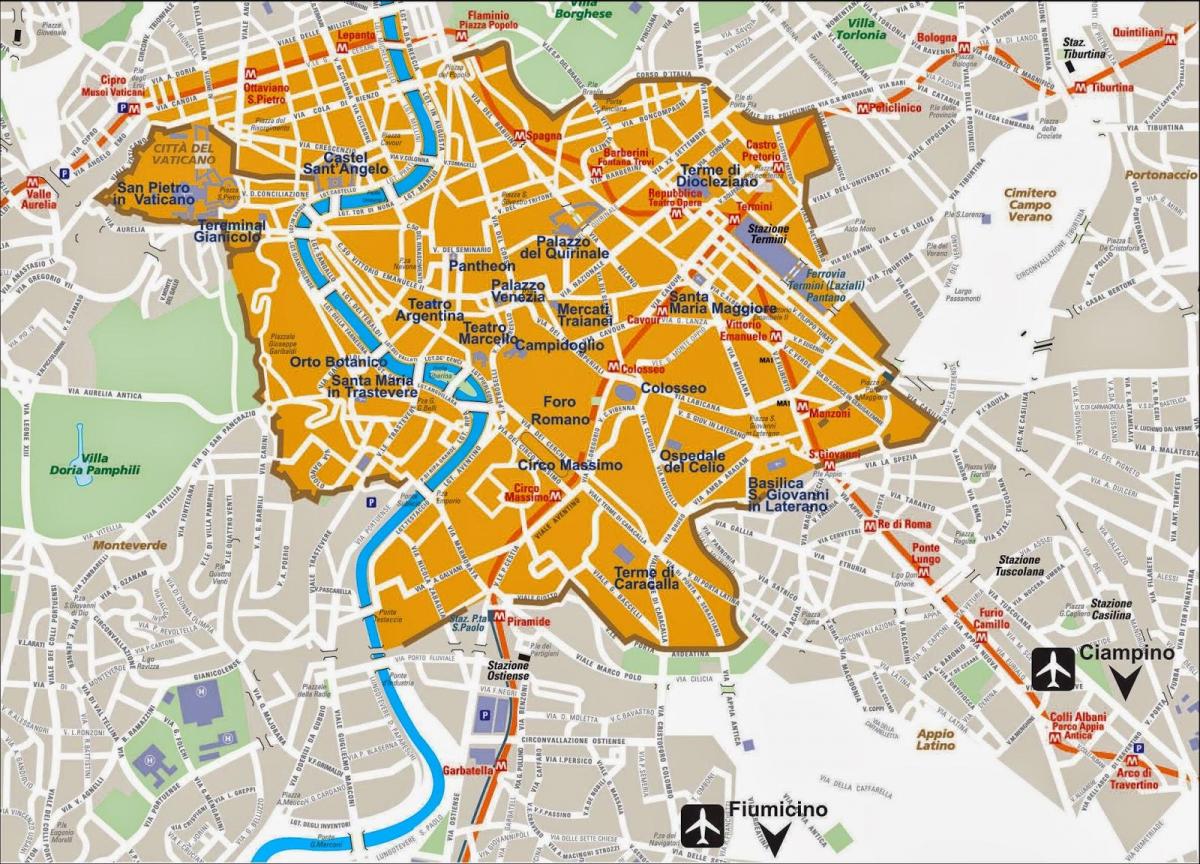search
Aurelian walls map
Map of aurelian walls . Aurelian walls map (Lazio - Italy) to print. Aurelian walls map (Lazio - Italy) to download. The Aurelian Walls (Italian: Mura aureliane) are a line of city walls built between 271 AD and 275 AD in Rome, Italy, during the reign of the Roman Emperors Aurelian and Probus. The aurelian walls enclosed all the seven hills of Rome plus the Campus Martius and, on the right bank of the Tiber, the Trastevere district as its shown in aurelian walls map.
The full circuit ran for 19 kilometres (12 mi) surrounding an area of 13.7 square kilometres (5.3 sq mi). The aurelian walls were constructed in brick-faced concrete, 3.5 metres (11 ft) thick and 8 metres (26 ft) high, with a square tower every 100 Roman feet (29.6 metres (97 ft)) as its mentioned in aurelian walls map. In the 5th century, remodelling doubled the height of the aurelian walls to 16 metres (52 ft). By 500 AD, the circuit possessed 383 towers, 7,020 crenellations, 18 main gates, 5 postern gates, 116 latrines, and 2,066 large external windows.
The Aurelian Walls continued as a significant military defense for the city of Rome until September 20, 1870, when the Bersaglieri of the Kingdom of Italy breached the wall near the Porta Pia and captured Rome as its mentioned in aurelian walls map. The aurelian walls also defined the boundary of the city of Rome up until the 19th century, with the built-up area being confined within the walled area. The Aurelian Walls remain remarkably well-preserved today, largely the result of their constant use as Rome's primary fortification until the 19th century.


